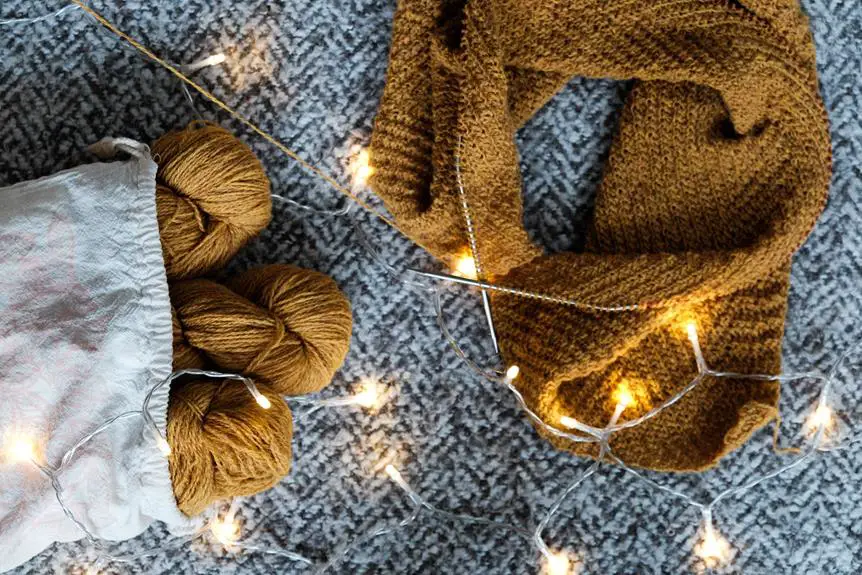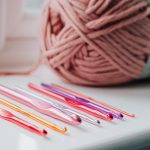When it comes to choosing the right fabric needle for your next sewing project, it's like selecting the perfect tool from a well-stocked workshop. Groz-Beckert offers a wide range of fabric needles, each designed to suit specific project needs.
Understanding needle sizes, point styles, fabric compatibility, coating options, and specialized varieties is crucial for achieving precision in your work. With the right needle selection, you can elevate the quality of your stitching and ensure seamless results.
This guide will delve into the intricacies of Groz-Beckert fabric needles, providing you with the expertise needed to make informed choices for your upcoming projects.
Key Takeaways
- Needle size selection is crucial for sewing projects, considering fabric weight and type
- Needle point styles should be matched to fabric type, weight, weave, stitch style, and thread type
- Needle coating should be chosen based on fabric type and sewing requirements
- Groz-Beckert offers a wide range of specialized needle varieties for specific fabric types and sewing techniques
Understanding Needle Sizes
If you're unsure about needle sizes, it's essential to understand how they impact your sewing projects. Needle size comparison is crucial for achieving the best results.
The size of the needle affects the fabric in different ways. A larger needle may leave noticeable holes in delicate fabrics, while a smaller needle may cause larger fabrics to pucker.
When choosing the right needle size, consider the fabric weight and type. For lightweight fabrics such as silk or chiffon, a smaller needle size, such as 60/8, is suitable, while heavier fabrics like denim or upholstery require larger needle sizes, such as 100/16 or 110/18.
It's important to pay attention to the needle size recommendations on patterns and fabric bolt ends. Using the wrong needle size can lead to skipped stitches, fabric damage, and uneven stitching.
Understanding needle sizes is fundamental to achieving professional-looking sewing projects. Therefore, taking the time to learn about needle size comparison and choosing the right needle size for each project is a crucial aspect of mastering the art of sewing.
Needle Point Styles
When selecting fabric needles for your next project, it's important to understand the various needle point styles and their specific uses. Needle point comparison is crucial for achieving optimal results in your sewing or quilting endeavors.
Groz-Beckert offers a range of needle point styles, each designed to address specific fabric characteristics and sewing techniques. The needle selection factors to consider include the fabric type, weight, and weave, as well as the intended stitch style and thread type.
The most common needle point styles include ballpoint, sharp, and special application points. Ballpoint needles are ideal for knit fabrics as they penetrate the fabric without damaging the fibers. On the other hand, sharp needles are suitable for woven fabrics and precise stitching. Special application points encompass a variety of styles tailored to specific tasks such as embroidery, quilting, or leatherwork.
Fabric Type Compatibility
To ensure that your sewing or quilting endeavors yield optimal results, it is crucial to match the needle point style with the specific fabric type you are working with. Different fabrics require different needle types to prevent issues such as skipped stitches, fabric damage, or uneven tension. Consider the needle material differences and needle thread compatibility to select the most suitable needle for your project. Below is a table outlining fabric types and the compatible Groz-Beckert fabric needles:
| Fabric Type | Compatible Needle Type |
|---|---|
| Woven Cotton | Universal (Regular) |
| Knits | Ballpoint |
| Denim | Jeans |
| Leather | Leather |
Understanding the fabric type compatibility with needle types is imperative for achieving professional results. For instance, when working with woven cotton, using a universal (regular) needle prevents fabric puckering and ensures smooth stitching. Similarly, when sewing knits, a ballpoint needle is ideal as it slides between the fabric loops without damaging them. Always consider the fabric characteristics and the intended use of the final product to determine the most suitable needle type for your project.
Needle Coating Options
Consider the durability and performance benefits of different needle coatings when selecting the most suitable needle for your project. Groz-Beckert offers various coating options that cater to different fabric types and sewing requirements.
Here are some coating benefits and application techniques to help you make an informed decision:
- Chrome coating: Known for its durability and reduced friction, chrome-coated needles are suitable for sewing dense or abrasive materials like denim and canvas. The smooth surface minimizes heat build-up, making it ideal for high-speed sewing applications.
- Titanium nitride coating: This coating option provides increased wear resistance, making it suitable for synthetic and densely woven fabrics. The gold-colored coating reduces needle heat and enhances needle visibility, which is beneficial for intricate or decorative stitching.
- Anti-adhesive coating: Needles with an anti-adhesive coating are designed to prevent adhesive build-up when sewing materials like leather, foam, or adhesive-coated fabrics. This ensures consistent stitch formation and reduces the frequency of needle replacements.
Understanding the coating benefits and their application can significantly impact the quality and longevity of your sewing projects. Choose the appropriate needle coating to optimize your sewing experience.
Specialized Needle Varieties
Explore the range of specialized needle varieties available for your specific sewing needs. When it comes to specialized needle varieties, Groz-Beckert offers a wide selection of options to cater to different fabric types and sewing techniques. From needle material options to the needle manufacturing process, each variety is designed to meet specific requirements, ensuring optimal performance and quality stitching.
| Needle Variety | Description |
|---|---|
| Metallic Needles | Designed for metallic and synthetic threads, reducing thread breakage and ensuring smooth stitching. |
| Leather Needles | Featuring a cutting point for piercing through tough materials like leather, suede, and other non-woven fabrics. |
| Embroidery Needles | Ideal for decorative stitching and embroidery, with a larger eye to accommodate specialty threads and yarns. |
Groz-Beckert's specialized needle varieties are crafted from high-quality materials using advanced manufacturing processes. These needles undergo stringent quality control measures to ensure precision, durability, and performance. Whether you're working with delicate fabrics, heavy-duty materials, or specialty threads, there's a specialized needle variety to meet your sewing requirements.
Needle Selection Tips
When selecting the right needle for your project, it's crucial to consider the type of fabric you'll be working with. Different fabrics may require specific needle types to ensure optimal stitching results.
Additionally, the size of the needle plays a significant role in achieving the desired outcome, so be sure to match the needle size to the fabric weight for best results.
Fabric Type Considerations
Choosing the right needle for your fabric type involves considering various factors to ensure optimal stitching results. When selecting needles for different fabric types, keep in mind the following tips:
- Fabric weight: Use a larger needle size for heavier fabrics and a smaller needle size for lighter fabrics to prevent damage or skipped stitches.
- Fabric weave: Match the needle type to the fabric weave; for tightly woven fabrics, use a sharp needle, while for looser weaves, a ballpoint needle is more suitable.
- Fabric texture: Consider the texture of the fabric, as thicker or more textured fabrics may require a stronger or more specialized needle to penetrate the material effectively.
Needle Size Importance
To achieve optimal stitching results, always consider the frequency with which you sew when selecting the appropriate needle size for your project. Stitch quality is heavily influenced by needle size.
For heavier fabrics, a larger needle size is essential to ensure that the needle can penetrate the material without causing damage. Conversely, lighter fabrics require smaller needle sizes to prevent puckering or snags.
Furthermore, machine compatibility is crucial when choosing the needle size. Different sewing machines may require specific needle sizes to function properly. Always consult your machine's manual to ensure the needle size is compatible.
Choosing the right needle size for your project not only ensures stitch quality but also prolongs the life of your sewing machine.
Needle Maintenance and Storage
You should always store your fabric needles in a dry, clean, and secure container to prevent damage and maintain their sharpness.
Proper care and storage of your fabric needles is essential to maximize their lifespan and ensure optimal performance.
Here are some important tips for needle maintenance and storage:
- Clean your needles after each use by gently wiping them with a soft, dry cloth to remove any lint or residue.
- Store your needles in a designated needle case or organizer to prevent them from getting bent, broken, or lost.
- Avoid exposing your needles to moisture, extreme temperatures, or direct sunlight, as these can lead to corrosion or weakening of the needle material.
By following these maintenance and storage practices, you can prolong the life of your fabric needles and maintain their precision and effectiveness.
Remember that proper care and storage are crucial for preserving the quality of your needles and ensuring successful sewing projects.
Frequently Asked Questions
Can Groz-Beckert Fabric Needles Be Used for Hand-Sewing as Well as Machine-Sewing Projects?
Yes, Groz-Beckert fabric needles can be used for both hand-sewing and machine-sewing projects. They are designed to accommodate a variety of hand sewing techniques and fabric types, making them versatile for your next project.
Are There Any Specific Fabric Types That Groz-Beckert Fabric Needles Are Not Compatible With?
Some fabric types may not be compatible with Groz-Beckert fabric needles due to needle material preferences. It's essential to consider the specific characteristics of your fabric when selecting the appropriate needle type for optimal sewing results.
How Do Needle Coating Options Impact the Performance and Longevity of Groz-Beckert Fabric Needles?
Needle material options impact performance and longevity by influencing friction, wear, and heat resistance. Consider needle size for proper fabric penetration. Choose coatings like titanium nitride for reduced friction or chrome plating for wear resistance.
Are There Specialized Groz-Beckert Fabric Needles Designed for Specific Sewing Techniques, Such as Quilting or Embroidery?
Specialized Groz-Beckert fabric needles are designed for specific sewing techniques like quilting and embroidery. They enhance precision and produce high-quality results. The right needle can make a significant difference in the outcome of your quilting and embroidery projects.
What Are Some Additional Needle Selection Tips for Choosing the Right Groz-Beckert Fabric Needles for a Particular Project?
When choosing Groz-Beckert fabric needles for a project, consider the needle size to match the fabric weight, and the needle point shape for the sewing technique. Use finer needles for lightweight fabrics and ballpoint needles for knits.
- How Does Ring Spun Cotton Affect Garment Fit and Shape Retention? - August 13, 2024
- What Are the Challenges in Producing Ring Spun Cotton? - August 13, 2024
- Is Ring Spun Cotton Suitable for Plus-Size Clothing? - August 13, 2024






